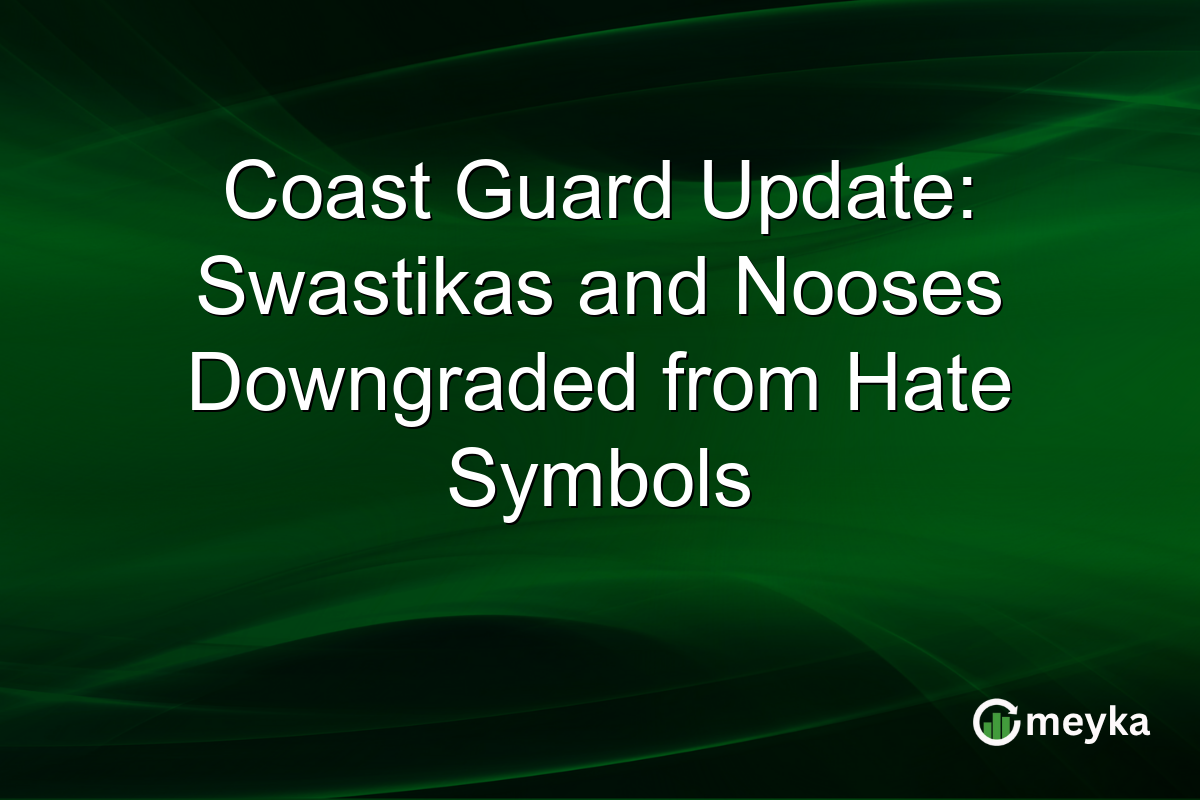Coast Guard Update: Swastikas and Nooses Downgraded from Hate Symbols
The U.S. Coast Guard’s recent policy change regarding hate symbols has stirred significant debate. In a surprising move, swastikas and nooses have been downgraded from ‘hate symbols’ to ‘potentially divisive’ imagery. This Coast Guard policy change has sparked controversy nationwide, raising questions about its impact on workplace inclusivity and standards of conduct within this critical military service.
Understanding the Coast Guard Policy Change
The reclassification of swastikas and nooses marks a significant shift in the Coast Guard’s approach to symbols of hate. Previously, these items were explicitly listed as hate symbols, which led to stricter penalties for displaying such items. Now, by labeling them as ‘potentially divisive’, the Coast Guard has altered how these symbols are addressed in terms of discipline and prevention. This shift fits into a broader effort to reassess what qualifies as “hate speech” or “hate symbolism.” However, it risks diluting the seriousness of these symbols, which are widely recognized as representing hate and intolerance.
For more insights, you can read the full press release on Congressman Courtney’s website: courtney.house.gov/media-center/press-releases/courtney-statement-coast-guard-policy-no-longer-classify-swastikas-and.
Implications of Downgrading Hate Symbols
The classification change might appear subtle but carries profound implications for Coast Guard personnel and culture. By altering the categorization, it may lessen the perceived severity of displaying these items, potentially undermining harassment policy enforcement. Critics argue that this diminishes the protections for minority personnel and could foster an environment of unease. The move has been described as the Coast Guard’s attempt to align with broader military policies, yet many see it as a step back for inclusivity. It raises questions regarding the emphasis placed on creating a tolerant workplace free from harassment.
Public Reaction and Controversy
This Coast Guard controversy has elicited a range of reactions. Advocacy groups and some lawmakers have expressed strong disapproval, citing concerns over potential increases in harassment. Public discourse indicates that many see this shift as a failure to recognize the profound impact symbols like the swastika and noose have historically had. Social media platforms, including Reddit and X (formerly Twitter), have seen heated debates, as people question the future implications on service members’ morale and unity.
For further reading, explore Truthout’s coverage for a detailed article: truthout.org/articles/swastikas-and-nooses-are-no-longer-hate-symbols-under-new-coast-guard-rules/.
Potential Legal and Cultural Outcomes
Given the long-standing associations of these symbols with hate and intimidation, this policy change could have legal repercussions. Challenges may arise around harassment allegations, potentially affecting how cases are prosecuted under military law. The move might also prompt changes in training and education about diversity and inclusion within the Coast Guard. Observers believe that re-evaluating hate symbols is needed but emphasize that the security and comfort of personnel must remain paramount. Ongoing discussions highlight the importance of maintaining vigilance against harassment while adopting evolving standards.
Final Thoughts
The Coast Guard’s reclassification of swastikas and nooses from hate symbols to potentially divisive imagery has sparked robust debate across the U.S. This policy change highlights the delicate balance between reevaluating standards and ensuring a safe, inclusive work environment. With public reaction intensifying, the Coast Guard must navigate these waters carefully to uphold its commitment to diversity while respecting the views and safety of all service members. Observing how this impacts future policy and personnel dynamics will offer clearer insights into its longer-term implications.
FAQs
The Coast Guard aimed to realign its policies with broader military standards, reclassifying swastikas and nooses from ‘hate symbols’ to ‘potentially divisive.’ This move sought to clarify disciplinary approaches but has raised concerns about potential impacts on harassment policy.
By downgrading these symbols, it may lessen the perceived severity of displaying them, potentially affecting harassment enforcement. This could lead to a less inclusive environment for personnel, particularly those from minority backgrounds.
The change has sparked controversy, with advocacy groups and lawmakers criticizing the decision. Social media discourse reflects widespread unease, with many fearing it may increase harassment incidents and affect morale within the Coast Guard.
Potential legal challenges may emerge, particularly around how harassment cases involving these symbols are handled under military law. The adjustment could influence future training and diversity programs to ensure robust anti-harassment measures.
Disclaimer:
The content shared by Meyka AI PTY LTD is solely for research and informational purposes. Meyka is not a financial advisory service, and the information provided should not be considered investment or trading advice.






